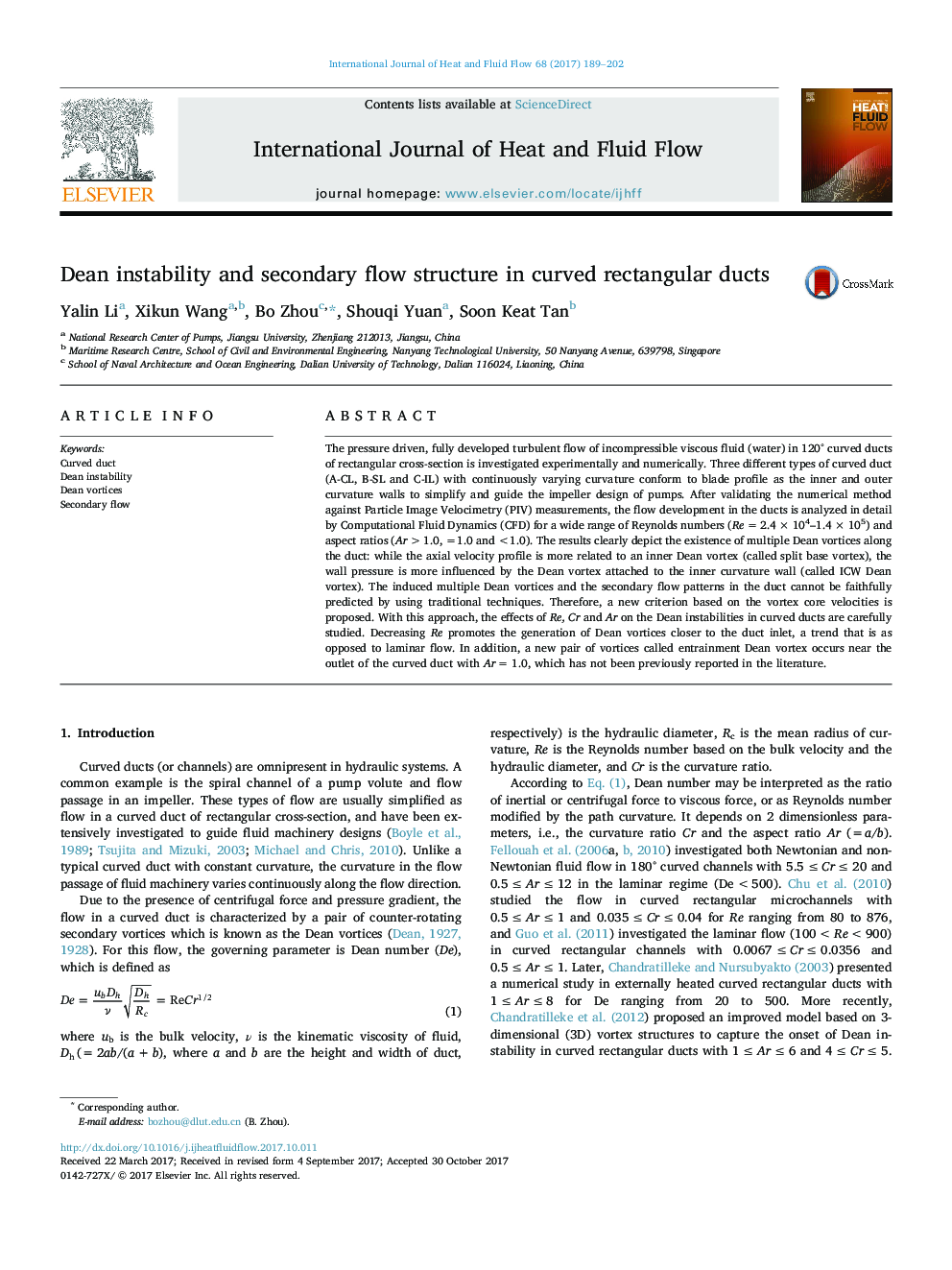| Article ID | Journal | Published Year | Pages | File Type |
|---|---|---|---|---|
| 7053576 | International Journal of Heat and Fluid Flow | 2017 | 14 Pages |
Abstract
The pressure driven, fully developed turbulent flow of incompressible viscous fluid (water) in 120° curved ducts of rectangular cross-section is investigated experimentally and numerically. Three different types of curved duct (A-CL, B-SL and C-IL) with continuously varying curvature conform to blade profile as the inner and outer curvature walls to simplify and guide the impeller design of pumps. After validating the numerical method against Particle Image Velocimetry (PIV) measurements, the flow development in the ducts is analyzed in detail by Computational Fluid Dynamics (CFD) for a wide range of Reynolds numbers (Reâ¯=â¯2.4â¯Ãâ¯104-1.4â¯Ãâ¯105) and aspect ratios (Arâ¯>â¯1.0, =1.0 and <1.0). The results clearly depict the existence of multiple Dean vortices along the duct: while the axial velocity profile is more related to an inner Dean vortex (called split base vortex), the wall pressure is more influenced by the Dean vortex attached to the inner curvature wall (called ICW Dean vortex). The induced multiple Dean vortices and the secondary flow patterns in the duct cannot be faithfully predicted by using traditional techniques. Therefore, a new criterion based on the vortex core velocities is proposed. With this approach, the effects of Re, Cr and Ar on the Dean instabilities in curved ducts are carefully studied. Decreasing Re promotes the generation of Dean vortices closer to the duct inlet, a trend that is as opposed to laminar flow. In addition, a new pair of vortices called entrainment Dean vortex occurs near the outlet of the curved duct with Arâ¯=â¯1.0, which has not been previously reported in the literature.
Related Topics
Physical Sciences and Engineering
Chemical Engineering
Fluid Flow and Transfer Processes
Authors
Yalin Li, Xikun Wang, Bo Zhou, Shouqi Yuan, Soon Keat Tan,
